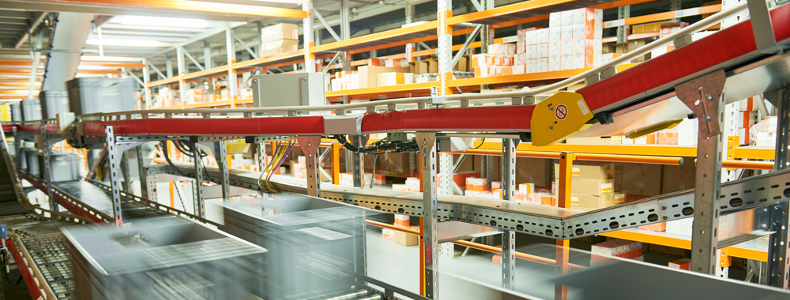Coupling and Locking Assembly Options for Warehouse Automation Systems

When it comes to automated warehouses, precision is key. Hundreds of shuttles and miles of conveyors must all work together to ensure products are transported successfully to their designated location for storage or delivery. Of all the components that play a role in the precision of these systems, do not forget about Couplings and Locking Devices – both of which are widely used in this application.
Conveyors
Sortation conveyors, which direct products, for example, can be driven pneumatically or by motor. Conveyors are connected to their motors via chain, belt or couplings. The slightest error in the alignment or placement of these components could have catastrophic results, disrupting the flow of goods through the warehouse.
Couplings & Locking Devices
Here is an overview of the types of couplings and locking devices that play a role in warehouse automation:
Locking Assemblies
Consider using Locking Assemblies when mounting hubs to shafts within automated storage and retrieval system (AR/AS) shuttles. The 360° clamping connection ensures torque is transmitted without inducing wear – compared to a keyed solution this combination provides the best performance for timing and repeatability. Most leading manufacturers of warehouse automation shuttles use this technology, including DEMATIC and lNTELLIGRATED.
Clamp Couplings
In applications where no misalignment is allowed, consider one-piece clamp couplings when connecting two shafts – a common scenario in AR/AS shuttles. This type of coupling provides both maximum coupling force and proper transmission of torque. Most leading manufacturers of warehouse automation shuttles utilize this technology.
Servo-insert Couplings
Consider these couplings if your warehouse system operates in a confined or difficult to reach area. Servo-insert couplings, available in sizes as small as 2 mm, optionally integrate radial set screws instead of a clamping hubs to connect the element to the shaft. They are also pluggable, electrically insulating and vibration-damping – making them ideal for warehouse systems that utilize robotics or conveyor equipment. You can find this coupling style in virtually any automated warehouse, from retailers like Walmart and Amazon to package handlers like UPS.


Comment